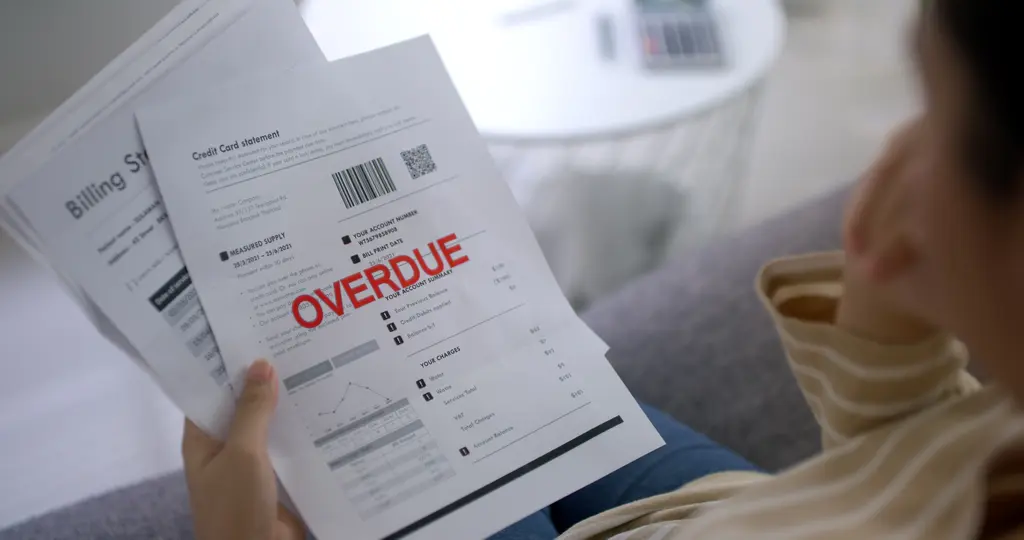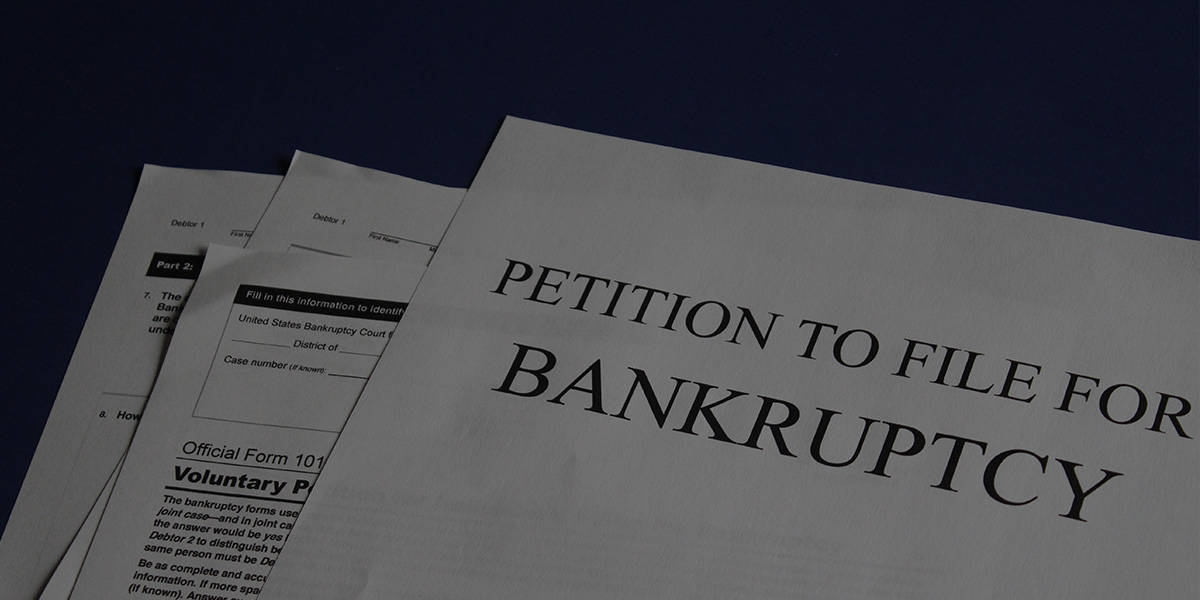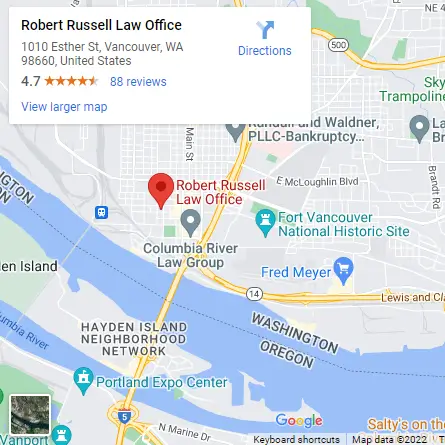Why It’s Useful: This is a link to an article discussing obtaining mortgage modifications in and after bankruptcy.
Subject: Bankruptcy & HAMP Modifications (2010 Article)
Useful Link: http://www.usfn.org/AM/Template.cfm?Section=Home&CONTENTID=16112&SECTION=..
NOTE: This post is one of the many “Useful Links” you will find on this website’s “Useful Links” page. Links on the “Useful Links” page are in a sortable table by category and subject matter. That page has links to articles or sites that are useful on various subjects. If you have a suggesting for another “useful link” to add to our list, please contact us and let us know. Robert Russell Law Group claims no copyright to third party materials, documents, websites, website content, etc.
(Linked text begins/includes …)
Bankruptcy Update: HAMP Mod-in-a-Box Meets BK
by Alan Wolf
The Wolf Firm —USFN Member (CA)
In February 2009, the Obama Administration introduced a comprehensive Financial Stability Plan, which, in part, included a section intended to stabilize the housing market and help struggling homeowners get relief and avoid foreclosure. The section is known as the Home Affordable Modification Program, commonly referred to by its acronym “HAMP.”
At its core, HAMP provides eligible homeowners with the opportunity to modify their mortgages; to make them more affordable by temporarily lowering monthly payments to 31 percent or less of the borrower’s pre-tax income, if the borrower can timely make three reduced payments before the modification (the “trial payments”), and if the modification would result in a greater return than a foreclosure (the net present value analysis, NPV). The program provides taxpayer-funded incentives, earmarked at $75 billion, to pay mortgage servicers and lenders who voluntarily modify mortgages, and to pay borrowers who complete the plan.
The April 2010 HAMP Servicer Performance Report evidences that about 4,000,000 borrowers have been solicited for HAMP; 1,500,000 trial plan offers have been extended; 1,200,000 trial plans were started; and there are about 600,000 active trial plans and 300,000 modifications. The HAMP modifications have resulted in the average reduction of mortgage payments from about $1,400 to $800 per month. HAMP is set to end on December 31, 2012.
While simple in concept, the execution of HAMP is less than easy. First, HAMP has many types and categories. There is GSE HAMP, FHA HAMP, VA HAMP, and Treasury HAMP. Following the nuances of each program is daunting. In addition to the “rules” and supplemental directives (e.g., Department of Treasury directives 09.01-09.10 and 10.01-10.03), there are FAQs, FAQ revisions, and, even, the press-release-with-details-to-follow.
To make matters worse, HAMP is a highly political animal with a plethora of entities pushing their own agenda, including Congress, consumer groups, Department of Treasury, OCC, SIGTARP, GAO, FTC, DOJ, FHA, and state attorneys general and legislators. Because of this political tug-of-war, it’s easy to see why HAMP in all its forms is a dynamic, ever-changing landscape. For reasons of simplicity (not to mention space constraints), this article limits its analysis to the Department of Treasury (DOT) and Fannie Mae HAMP procedures.
Bankruptcy and HAMP
As difficult as HAMP is by itself, it is made ever more complicated by bankruptcy. HAMP is a mod-in-a-box. Bankruptcy is liquidation-in-a-box (chapter 7) or a repayment plan-in-a-box (chapter 13). So how do HAMP and bankruptcy work together? Simple answer: they don’t.
Boxes need to be stacked; you don’t try to crush them together. Accordingly, if this author were writing the law, HAMP would only be allowed after the borrower obtained a chapter 7 discharge and the bankruptcy case was closed. (It’s the backend ratios killing HAMP performance, and the bankruptcy discharge solves that). However, this is not reality, and so we as an industry must tackle HAMP and bankruptcy — and crush boxes in the process.
What servicers must do in relation to HAMP and bankruptcy differs by loan type. The Department of Treasury (DOT) regulations establish one set of expectations. The Fannie Mae regulations, yet another.
Supplemental Directive 10-02
The DOT bankruptcy rules are governed by Supplemental Directive 10-02 (effective June 1, 2010). The directive provides for the following:
▪ Borrowers in an active chapter 7 or chapter 13 bankruptcy case must be considered for HAMP if the borrower, borrower’s counsel, or bankruptcy trustee submits a request to the servicer.
▪ Borrowers who are in a trial period plan and, subsequently, file for bankruptcy may not be denied a permanent HAMP modification on the basis of the bankruptcy filing.
▪ The servicer, and its counsel, must work with the borrower or borrower’s counsel to obtain any court or trustee approvals of the modification as required by local court rules and procedures.
▪ If additional time is needed to obtain the necessary approvals, the servicer is permitted (but not required) to extend the trial period plan for up to an additional two months (resulting in a total trial period of 5 months).
▪ If a borrower in a chapter 13 case is in a trial period plan and making post-petition mortgage payments as required by the trial period plan, a servicer must not object to confirmation of a borrower’s plan, move for relief from the automatic stay, or move for dismissal of the chapter 13 case on the basis that the borrower paid only the trial period plan payments rather than the scheduled mortgage payments.
▪ Borrowers who have received a chapter 7 discharge and did not reaffirm the mortgage debt are eligible for HAMP, and the following language must be added to the modification agreement: “I was discharged in a Chapter 7 bankruptcy proceeding subsequent to the execution of the Loan Documents. Based on this representation, Lender agrees that I will not have personal liability on the debt pursuant to this Agreement.”
▪ A servicer may choose (but is not required) to accept the bankruptcy schedules and tax return filed in the case in lieu of the RMA and Form 4506T-EZ, and may use this information to determine eligibility (but if the schedules are more than 90 days old, the borrower must provide updated evidence of income and borrowers must still provide a hardship affidavit).
▪ Borrowers in a chapter 13 case who are determined eligible for HAMP may be converted to a permanent modification without completing a trial period plan if: (1) the borrower makes all post-petition payments on the mortgage to be modified and at least three of those payments are equal to or greater than the proposed modified payment; (2) the modification is approved by the bankruptcy court, if required; and (3) the trial period plan waiver is permitted by the applicable investor guidelines.
Fannie Mae
As of late May 2010, Fannie Mae had yet to adopt Supplemental Directive 10-02. Thus for Fannie Mae bankruptcy loans involved with HAMP, the rules (Announcement 09-05 R) are simply as follows:
▪ Borrowers in active chapter 7 or chapter 13 bankruptcy cases remain eligible for HAMP at the servicer’s discretion.
▪ If it’s a chapter 7 case, the servicer must use the same chapter 7 language as is required in the DOT directive referenced earlier: “I was discharged in a Chapter 7 bankruptcy proceeding subsequent to the execution of the Loan Documents. Based on this representation, Lender agrees that I will not have personal liability on the debt pursuant to this Agreement.”
Fannie Mae’s approach seems to recognize that HAMP and bankruptcy don’t mix.
Key Bankruptcy Concepts
Before reviewing the problems inherent in mixing HAMP and bankruptcy, it is important to remember some key bankruptcy concepts:
Property of the Estate — Upon the filing of a bankruptcy case, the assets of the debtor (like the debtor’s home) become property of the estate. If something is property of the bankruptcy estate, the debtor needs bankruptcy court approval, or approval by local court rule, to take any significant action regarding the property. A modification of the loan (just like a sale of the property or a refinance) is significant action. An order terminating the stay does not remove property from the bankruptcy estate, absent specific language in the order to that effect. A chapter 7 trustee’s “No Asset Report” does not remove property from the bankruptcy estate unless there is specific language in the report ordering that the estate closed. Except as otherwise provided in the chapter 13 plan, or the order confirming the plan, the confirmation of a plan vests all of the property of the estate in the debtor. 11 U.S.C. § 1327(b). Most chapter 13 plans have specific language that the property does not vest in the debtor until the debtor’s discharge. Since the chapter 13 discharge does not occur until the end of the chapter 13 case, the property remains property of the estate until the end of the plan. An order abandoning property removes property from the estate. 11 U.S.C. § 554.
Automatic Stay — The stay stops any act that can be construed as an act against the interests of the debtor. 11 U.S.C. § 362(2).
Chapter 13 Proof of Claim — A chapter 13 proof of claim sets forth the arrears that existed at the time the bankruptcy was filed.
Chapter 7 Discharge — A chapter 7 discharge does not eliminate the debt, but rather merely makes it nonrecourse. That is, the debt continues to exist, but the debtor is no longer personally liable for the debt. A loan can be modified post-discharge, as long as it is made clear that there is no liability of the debtor and the modification is not a reaffirmation agreement. Performing loss mitigation after a chapter 7 discharge does not violate the discharge injunction. 11 U.S.C. §524(j).
Agreement Providing Termination Upon Bankruptcy — A clause in a contract that terminates a contract because of the “insolvency” or “financial condition” of the debtor, or due to the filing of a bankruptcy case (generally known as an “ipso facto clause“), will be unenforceable once a bankruptcy case has been filed. 11 U.S.C. § 541(c).
General Principles — In addition to these bankruptcy principles, it is also important to remember that a loan maintains its contractual terms until it has been properly modified.
Applying the Concepts
When the bankruptcy concepts are synthesized, certain HAMP questions disappear. Here are some of the results:
▪ A HAMP workout can be solicited in bankruptcy because it’s not against the interests of the debtor. (It helps the debtor and thus there is no stay violation; see, e.g., U.S. Bankruptcy Court, District of Massachusetts, Standing Order 09.03). Further, it’s not in violation of the discharge injunction (specific statute on point).
▪ An ipso facto clause in a HAMP agreement that attempts to make the agreement null and void upon a bankruptcy filing is not effective (and specifically violates the new DOT directive).
▪ Bankruptcy court approval is needed (or a comparable local bankruptcy court rule) to do a HAMP modification, unless either the property has been abandoned by the estate or the case is in one of the jurisdictions where the property vests in the debtor upon confirmation and the HAMP modification is being attempted post-confirmation. (See, e.g., Clerk’s Notice 09-03 of the Northern District of Texas.)
▪ During the trial period, the loan has not been modified and so the amounts due are the contractual amounts due.
▪ If the loan has not been modified by the date of the filing of the bankruptcy petition, the prepetition arrearage is the contractual prepetition arrears.
▪ A prepetition agreement to accept less than full contractual payments during the trial period is still effective after the bankruptcy is filed. The debtor need only make the trial payments post-petition; but if the HAMP modification is not approved, the debtor will owe the remaining post-petition amounts (i.e., the difference between the regular payments and the HAMP trial payments).
▪ If the borrower is in a trial period at the time a chapter 13 case is filed, the proof of claim should reflect the contractual prepetition arrearage.
▪ If the HAMP modification occurred prior to the chapter 13 bankruptcy filing, the prepetition arrearage should be those arrears under the modified loan.
▪ If the HAMP modification is approved in the chapter 13 bankruptcy, the proof of claim should not be withdrawn, but instead should be amended to reflect the amount already received from the chapter 13 trustee.
The Problems
However, other issues are far from clear. Most of these issues relate to chapter 13 cases and how to coordinate the HAMP modification process with the chapter 13 plan confirmation process. Generally, a chapter 13 plan is confirmed within 60 days of the petition date. A condition of the HAMP modification is the payment of three trial payments. If any of those payments are to be paid post-petition, then the timing of the payments raises the specter that all of the trial payments may not be made by the time of plan confirmation. Accordingly, at confirmation of the plan, the loan would continue in its contractual, as opposed to HAMP-modified, state. When a plan is approved without including the HAMP modification, it then needs to be amended after the modification is made, or the court can continue the plan confirmation hearing until the requisite trial payments are made.
Courts, too, are struggling to define an approach. Surprisingly, some judges will not allow postponements of a plan confirmation hearing to allow the trial period to run. Other courts are essentially writing their own new chapter 13/HAMP plan process. For example, the bankruptcy court in the Southern District of Florida has recently begun to confirm some chapter 13 plans that provide for the anticipated payment under a HAMP modification request. While a bankruptcy court cannot require a mortgage modification, it can delay relief from stay by prohibiting the mortgage servicer from resuming a mortgage foreclosure until it properly considers a HAMP modification request, and duly denies or accepts it.
And in other jurisdictions, counsel for debtors are incorporating a modification into the plan and arguing that the borrower is entitled to a modification under HAMP guidelines, or that the doctrine of “good faith“ requires the court to order a HAMP modification. The process is a muddled one because the two concepts simply don’t work together.
Further pressing issues relates to trial payments in chapter 13 conduit districts. If the chapter 13 trustee is making the post-petition payments, it is likely that the debtor will fail to make the trial payments in a timely manner. Can a court excuse the late payments made by the trustee and force the HAMP modification? It’s doubtful, but we’ll soon see.
One more looming question is, who pays for the HAMP modification? It takes work to obtain a modification, including the requirement of a court order in most instances. Who does the work to get the court order, and what is the reasonable compensation? Since HAMP is so new, the division of labor and the fee structures for performing the work have yet to be decided.
Other unresolved issues include the following: (1) How do you do proper credit reporting on a HAMP loan in bankruptcy? (2) What do you do with your proof of claim where the debtor fails to make the trial payments, or the HAMP modification is otherwise denied post-petition, and tax advances have been made pursuant to HAMP requirements? (3) How do local rules regarding payment change notice requirements work with HAMP trial payments? (4) How do you comply with HAMP junior lien subordination requirements where the junior lien has been stripped in bankruptcy?
Conclusion
All of these questions and problems present a strong case for not doing HAMP during bankruptcy. Perhaps even more compelling, however, is the fact that HAMP is simply bad for chapter 13 debtors. When HAMP and bankruptcy are combined, a chapter 13 debtor almost invariably pays more.
This is because when a HAMP modification is approved post-petition in a chapter 13 case, the prepetition arrears are capitalized into the new modified mortgage loan and thus removed from the prepetition debt due. That would be fine if the debtor’s payments to the unsecured creditors were similarly reduced, but that is not what is happening today in most jurisdictions.
Instead of reducing payments, chapter 13 trustees are contending that the debtor should continue to make the same payments, resulting in the payment to the unsecured creditors of a greater amount than had the HAMP modification not been done. For example, if the debtor owed the mortgage lender $10,000 in prepetition arrears and then post-petition modified the loan through HAMP, the $10,000 owed the mortgage lender would be added to the note to be paid by the debtor over time, and unsecured creditors in the chapter 13 case would get $10,000 more than they otherwise would have been paid absent the HAMP modification. The end result is that the debtor pays for more than he would have if the loan had not been modified.
HAMP may provide a convenient mod-in-a-box, but it’s best not employed in bankruptcy.
© Copyright 2010 USFN. All rights reserved.
Summer USFN Report






